Afforestation Definition, Methods & Importance, Complete Essay
Welcome here! This page perfectly describes a comprehensive essay on “Afforestation Definition and methods”.
Topic includes the following points
- What is Afforestation
- Methods of Afforestation
- Benefits of Afforestation
- Objectives and Impact of Afforestation
Scroll down to read in detail……….
Afforestation Definition & Etymology
(af·for·es·ta·tion | \ (ˌ)a-ˌfȯr-ə-ˈstā-shən)
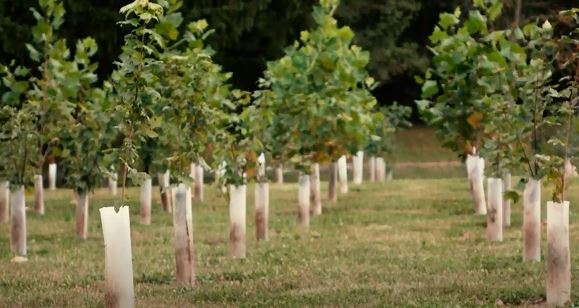
Etymology
From Latin ad + forresta, forestis
Noun
Afforestation Definition: The act or process of creating a new forest where none had existed before, or reforestation of areas long deforested.
Verb
Afforest (Convert to Forest)
Antonyms
deforestation
Related terms
deforest, deforestation
reforest, reforestation
Afforestation Definition Oxford Dictionary
“The process of planting areas of land with trees in order to form a forest”
Afforestation Definition by Cambridge Dictionary
“The action of planting trees on an area of land in order to make a forest”
Afforestation Definition by Merriam-Webster
“The act/process of establishing a forest especially on land that was not previously forested”
Afforestation Definition and introduction
Afforestation is a forest planting technique or method. A simple Afforestation definition is that it is the act or process of planting trees in a barren land to create a forest. People often confuse this term with reforestation. However, they are two very different things. Reforestation is the specific planting of trees in a forest whose trees are already declining. Therefore, reforestation significantly increases the number of trees, and afforestation basically creates a whole new forest on a land where there was no forest earlier.
So a question comes to our mind. Why do we need afforestation?
Human activities like the intensive exploitation of natural resources, overpopulation, pollution, and deforestation are seriously damaging the earth. People move into the forest and cut trees for agriculture and settlement. Deforestation ultimately results in flooding, landslides, soil erosion, famine, drought, etc. The high hills with fewer trees cause landslides which cause huge environmental and economic losses.
So we conclude that “Planting trees on new area is the afforestation and is the only solution to stop all these catastrophic changes in the environment”.
Afforestation is the need of the time. It is the best solution to many climate change problems. If we keep our environment and our natural system good for a long time, we must save future generations.
Afforestation Methods And Techniques
The afforestation Method of planting trees includes the following steps.
- Selection of Forest Site
- Site Preparation
- Planting of Afforestation Materials in Soil
1- Selection of Forest Site for Afforestation
Forest site factors should be considered and analyzed prior to afforestation to avoid reforestation failure. Once the type of afforestation land has been defined, the afforestation tree species and afforestation methods suitable for the type are selected according to the cultivation objectives.
Forest Site Factors
Forest site factors include climatic, topographical, soil, and hydrological factors.
Climatic factors determine the water and heat conditions on which plants depend, thus forming types of vegetation.
For afforestation, foresters pay more attention to microclimatic factors. Light, temperature, precipitation, solar radiation, wind speed, and other factors affect tree growth and forest productivity.
Topographic factors include elevation, aspect, slope, position, type of slope, etc.
- Increasing elevation in a specific area can reduce temperature, decrease evaporation, shorten the frost-free period, increase precipitation and atmospheric and soil moisture, increase soil fertility, dense vegetation, or change the type of vegetation.
- In addition, sites with lower slopes have better soil quality and higher nutrients and soil moisture than sites with steep slopes.
- It is necessary to collect many soil samples to represent the actual situation at the site, although this is very expensive.
At present, there are many monitoring instruments that can monitor forest weather factors including radiation, temperature, humidity, wind speed, wind direction, etc. It provides an important data source for future forest management and afforestation.
A simple Comparison of #BillionTreeTsunami plantation site before and after of Garhi Chandan plantation site in Pakistan
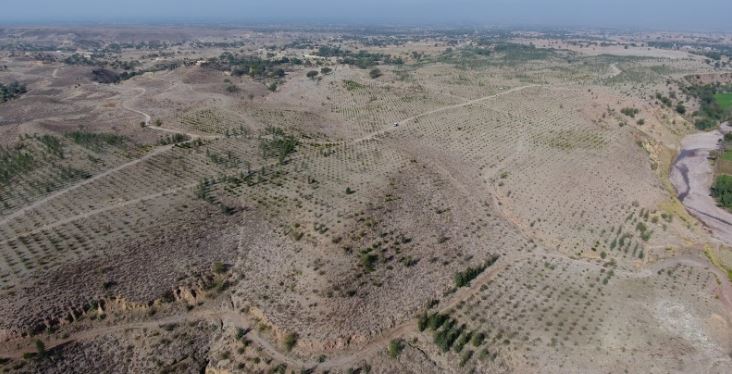
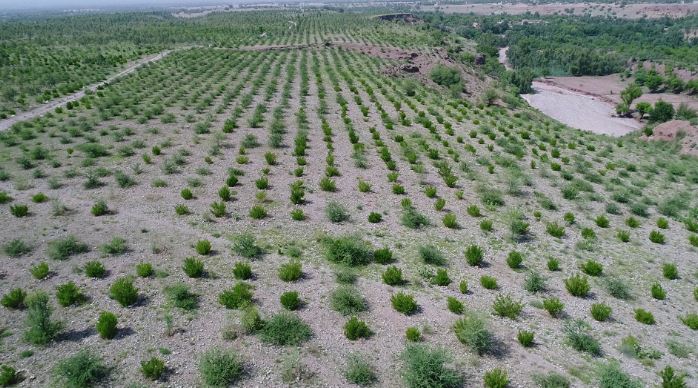
2. Site preparation Methods for Afforestation
Site preparation is a critical activity affecting the afforestation survival rate. Site preparation varies according to the types of afforestation land. Site preparation typically includes mechanical and chemical methods including leveling, scalping, trenching, littering, chopping, herbicide, prescribed burning, etc.
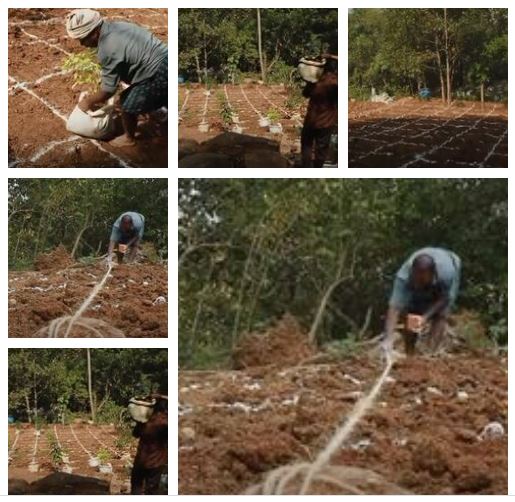
Mechanical methods of land preparation for Afforestation
The main purpose of mechanical methods is to eliminate unwanted plants, reduce their growth, protect surface soils and improve the quality of the site. Mechanical methods can redistribute dead vegetation, such as cutting or cutting; they can also reshape the soil surface, such as litter, plowing, and backfilling.
Chemical methods of land preparation for Afforestation
Chemical methods generally refer to herbicides, pesticides, and fertilization. Chemical site preparation, such as herbicides or pesticides, is both harmful and beneficial to the quality of the site.
- The herbicide can promote the early survival rate of trees and have a long-term effect on maintaining forest growth.
- Fertilization can supplement the loss of soil nutrients caused by logging and increase the survival rate of seedlings. Nitrogen, phosphorus, and potassium (NPK) are the main nutrients in fertilizers.
The success or failure of afforestation depends on the healthy growth of the root system. Whether it is a seed or a plant, only rooting or rooting after transplanting can form a forest. Site preparation promotes and ensures that the root system can be tightly integrated with the soil by different methods. Additionally, encourage the root system to absorb enough water.
3. Planting of afforestation materials in soil
Different types of Afforestation materials available to grow or plant new trees are following
- Seed
- Seedling
- Cutting
- Sprouting
Sexual methods of planting or sowing a tree are via seeds and seedlings. But cutting and sprouting method of afforestation use the vegetative or asexual technique of planting.
Each material has its advantages and disadvantages. The selection of suitable afforestation materials should take full account of the characteristics of the tree species. Numerous studies have shown that the age of planting material, the season, time, and methods of planting, all affect the survival rate of the new plants.
A- Afforestation with Seeds
Direct seeding is a widely used afforestation method. Compared with the sowing method, it has the merits of simple operation, high efficiency, low cost, and can be used on hard-to-reach areas.
- Direct seeding is considered the “best practice” for seedling production, regeneration, and afforestation.
- By sowing the seeds directly on forest land without lifting the seedlings, packing them, transporting them, or planting them, the root system of the seedlings will not be damaged.
- Direct seeding is more “close to nature”. It can maintain the intact natural distribution and expansion of the root system, especially of the taproot of the tree species.
- Seeds that germinate and grow on woodlands are better adapted to the climate and soil conditions.
However, it has strict requirements on water, heat, and vegetation conditions. Compared with the Afforestation of seedlings, seedlings formed by direct seeding grow slowly at the initial stage, so it takes longer to reach crown closure. Sometimes the seeds after sowing are easily damaged by birds and animals, trampled by livestock and human destruction, so there is a need to strengthen management and protection.

Pre-sowing treatment of seeds: Generally, before sowing, the seeds should be disinfected, soaked, sprouted, dressed, coated, and glued. The purpose of pre-sowing treatment is to shorten the duration of seeds in the soil before germination, to ensure the orderly emergence of seedlings, and to prevent damage to birds, mammals, and disease.
The germination rate of seeds in Afforestation
- The germination rate after sowing is related to the size and weight of the seeds. In addition, the timing of seeding, planting practices, microsite environment, competitive vegetation.
- A different sowing season can affect the seed germination rate, which should be determined based on the characteristics of the tree species and environmental conditions. Many studies have been carried out on the appropriate sowing season, such as certain species of pine in the southern United States and Finland (spring sowing), Pinus palustris in the United States (fall sowing), Fraxinus excelsior, and Acer pseudoplatanus in the UK (winter sowing). Some species can be sown in multiple seasons, such as temperate hardwoods in the United States [98].
B- Afforestation with seedlings
There are two types of seedlings, bare-root, and container. Compared to direct sowing, here plants have a full or partial root system. It can be planted in almost any suitable site, and the site conditions are not high.
In general, potted plants are used for afforestation in difficult site conditions. Additionally, plants are usually grown in nurseries or a controlled greenhouse environment, transplantation has more or less damaged the root system, and bare root and potted plants can be produced year-round.
Bare root seedlings have always been promoted for reforestation projects because they can be easily transported by hand by foresters and are cheaper than container seedlings.
- Afforestation with seedlings requires a series of practices including lifting, storage, transport to site, and planting. All of these operations can affect seedling performance. Protecting the roots of the seedlings during these operations is essential to maintain the moisture content and vitality of the plants.
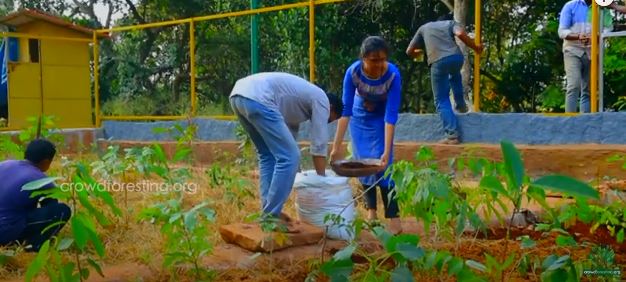
- To ensure the planting of seedlings, it is necessary to select the appropriate season and time according to the climate and soil conditions. Bare root seedlings and potted plants are produced in one to four growing seasons or one to two years. Theoretically, the appropriate planting time should be when the physiological activity of the aerial part of the plant is low (broadleaf deciduous tree species are in the deciduous stage) and the physiological activity of the root is low. vital, so that the healing ability of the roots is strong.
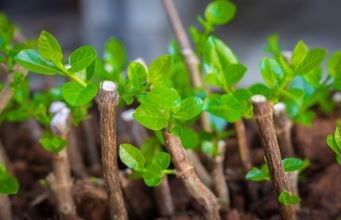
C- Afforestation with cuttings
Seeds and seedlings are methods of sexual afforestation, and many trees also have the ability to reproduce asexually. The cutting is a piece of plant that can be used in afforestation. It can be taken from stems, branches, leaves, roots and directly planted on forest land. Cuttings can retain target characteristics of the parent tree, such as high yield, rapid growth, and stress resistance.
Some research has shown that the behavior of cuttings varies with age, genotypes, physiological condition of the mother plant, cutting position, and temperature.
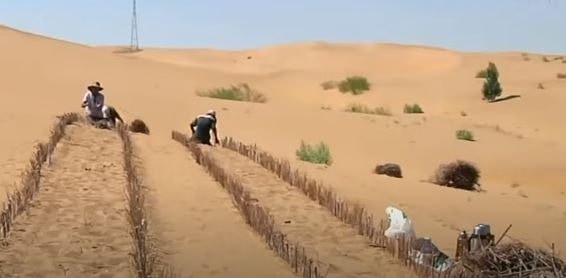
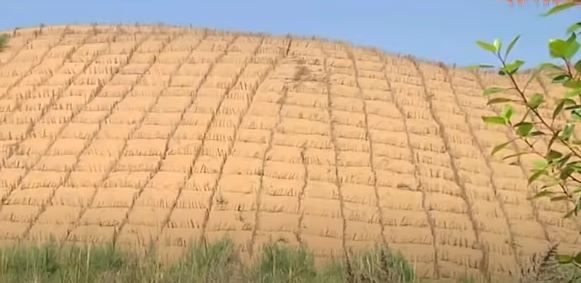
D- Afforestation with sprouting
Also, sprouting is another method of afforestation that can produce new forests. Sprouts are more resistant to disturbance than seedlings of seed origin and grow rapidly.
Strain or root weed sprouts are commonly used germination materials and can quickly produce many adventitious roots with high water absorption capacities, such as Populus, Robinia pseudoacacia, Salix, Cunninghamia lanceolata, Ziziphus jujuba, Paulownia tomentosa and Toxicodendron vernicifluum. The ability to germinate is believed to be related to species, stem size, age, and intensity of management.
Recently, sprouting has been widely used in the cultivation of coppice forests. In China, Europe, and the Americas, this method is used to develop short rotation energy forests to obtain raw materials from biomass.
Importance Of Afforestation
Afforestation has innumerable advantages. One cannot imagine the benefits this will bring to humanity, wildlife and vegetation.
List Of Benefits Of Afforestation
- It grows trees that provide a habitat for wildlife.
- It increases the supply of wood, fruit, fodder, and charcoal.
- It helps to solve the problems related to climate change, like carbon pollution, low rainfall, drought, etc.
- It helps to prevent soil erosion, flooding. This in turn will help maintain soil fertility. Hence, it will be beneficial for the agricultural sector.
- It increases and conserves the biodiversity of an area.
- Afforestation leads to better water retention. This can also prevent droughts.
- Afforestation is very fundamental to create an alternative source of natural resources like food, fibers, medicinal herbs, etc
- Afforestation helps fight global warming and stabilize global temperatures.
- Afforestation reduces greenhouse gases.
- It protects sensitive areas and promotes ecosystem balance by natural cycles.
- Afforestation can support wildlife
In short, we need to encourage afforestation. It will help make the world greener. In addition, afforestation will secure the future for our generations to come. Man must realize that if we do not take the essential steps, we will suffer. The earth will always survive as it is, we have to save ourselves.
Objectives of Afforestation
- To increase forest cover, Protection, and conservation of natural flora, fauna, forests, and wildlife
- Ecological regeneration and rehabilitation of degraded areas
- To increase O2 production and increase air quality.
- To increase carbon fixation and reducing CO2 from the atmosphere.
- Protection of the environment in order to promote sustainable development
- Assistance to organizations implementing forestry programs
Impact of Afforestation
Over the last few decades, afforestation area has grown rapidly in the semi-arid grasslands of the Qilian Mountains in northwestern China which effort to restore mountain vegetation.
- Afforestation altered the plant composition and increase the diversity of the herbaceous community.
-
Afforestation altered soil properties in both top and subsoil. This increased soil water content, soil organic carbon, total nitrogen, and organic carbon storage, and resulted in a significant increase in total phosphorus in the surface soil.
-
Afforestation increased soil organic carbon and nitrogen storage. In addition, afforestation significantly increased the soil C: N ratio in the upper soil.
Top Five Ways to Promote Afforestation
- Create awareness. People should learn the benefits of the presence of trees in our environment.
- Government support. The government would play an important role in putting in place rules and regulations prohibiting tree clearing. …
- Give away free seeds and seedlings.
- Tree planting competition.
- Layout strategy
Human role in afforestation
Almost 80% of deforestation is caused for agricultural purposes. Modernization in the recent century has resulted in the mass destruction of forests by humans and ultimately the destruction of wildlife and the rise in global warming. But there is hope always. The Intergovernmental Panel on Climate Change’s (IPCC) new special report is that some degree of “afforestation” will be needed to limit global warming to 1.5C above pre-industrial levels.
Several examples can be given where individual and governmental efforts are being done for reforestation and afforestation. One best example is the “Pakistan’s project of Billion Tree Tsunami “ a project started by the Pakistan government which is resulted in the restoration of 350,000 hectares.
Related posts:
- What is the Difference Between Afforestation And Deforestation?
- Importance of Afforestation With Definition & Objectives
